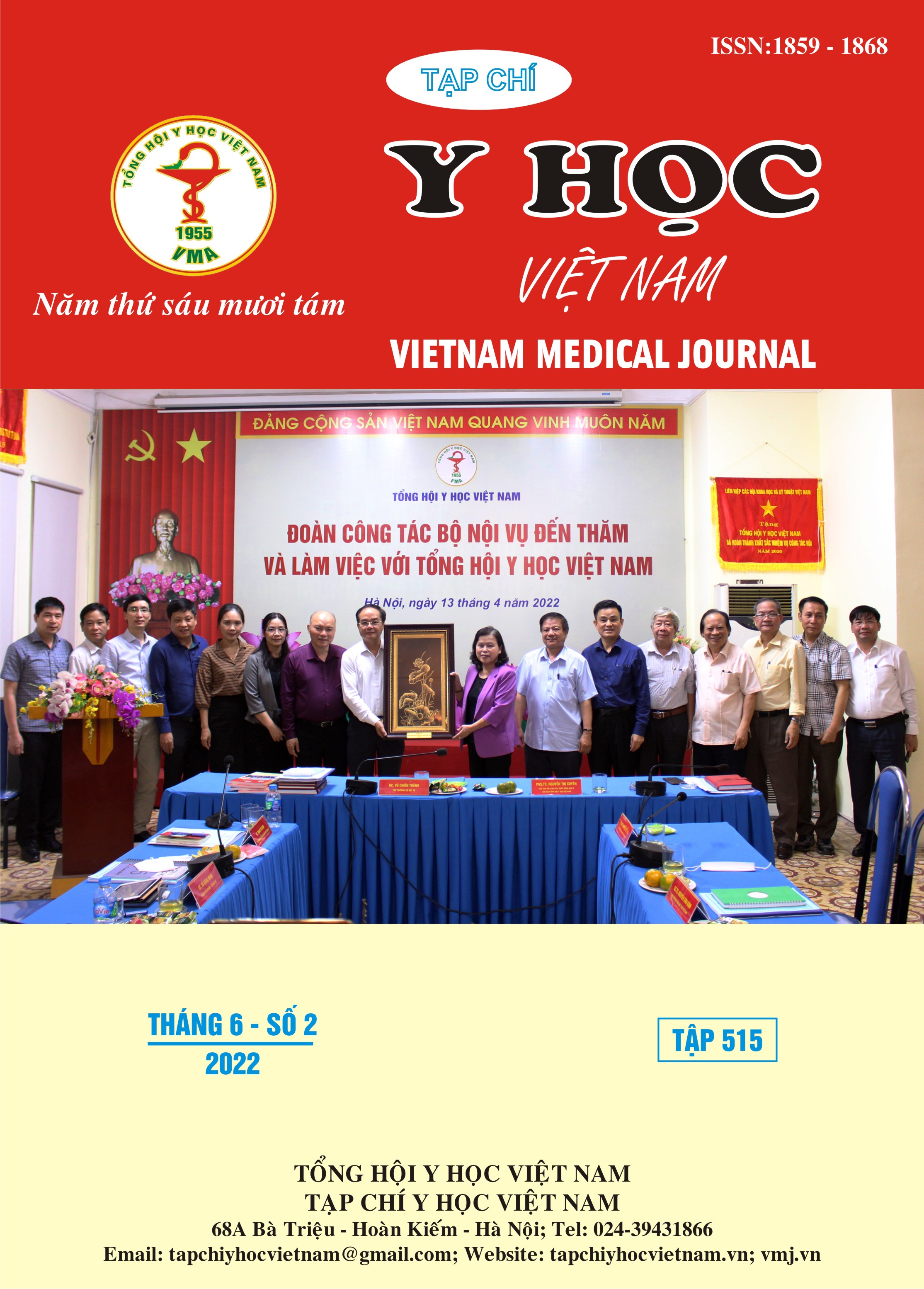RESEARCH ON MORPHOLOGICAL CHARACTERISTICS OF FRONTAL LOBE ON MRI IN PATIENTS WITH ALCOHOL USE DISORDER
Main Article Content
Abstract
Objectives: Morphological characteristics of frontal lobe on MRI in patients with alcohol use disorder. Subject and methods: Descriptive research, cross-section in 30 inpatients with alcohol use disorder at the Psychiatric Department, 103 Military Hospital from April 2021 to March 2022, and 21 healthy controls. Results: The total gray matter volume of the frontal lobe in the group of patients decreased compared to the control group (91,83 ± 1,35cm3 versus 97,29 ± 1,62cm3, with p<0,05). The volume of the right orbital gyrus gray matter and the left precentral gyrus volume in the patient group decreased compared to the control group (5,96 ± 0,1cm3 and 4,85 ± 0,11cm3 versus 6,24 ± 0,13cm3 and 5,20 ± 0,13cm3, with p<0,05). The thickness of superior frontal gyrus gray matter in the patient group decreased compared to the control group (2,55 ± 0,04 mm versus 2,68 ± 0,03 mm, with p<0,05). The volume of the superior frontal gyrus white matter, the medial frontal gyrus, the inferior frontal gyrus, and the precentral gyrus in the patient group decreased compared to the control group (34,27 ± 0,75 cm3; 37,16 ± 0,69 cm3; 14,01 ± 0,32 cm3 and 26,35 ± 0,48 cm3 versus 37,54 ± 0,90 cm3; 40,54 ± 0,83 cm3; 15,68 ± 0,38 cm3 and 30,08 ± 0,57 cm3, with p<0,05). Conclusion: The total gray matter volume of the frontal lobe, white matter volume of superior frontal gyrus, medial frontal gyrus, inferior frontal gyrus, and precentral gyrus decreased in the patient group compared to the control group.
Article Details
Keywords
Alcohol use disorder, Frontal lobes, Gray matter, White matter
References
2. Lê Phi Đại (2020) Nghiên cứu đặc điểm hình thái thể chai và một số cấu trúc dưới vỏ não trên hình ảnh MRI của bệnh nhân nghiện rượu, Luận văn Thạc sĩ Y học, Học viện Quân y.
3. World Health Organization (2019) Global status report on alcohol and health 2018, World Health Organization, Geneva.
4. American Psychiatry Association (2022) Alcohol Related Disorders, in: Diagnostic and statistical manual of mental disorders: DSM-5-TR, 5th edition, American Psychiatric Pub, Arlington, pp. 554-568.
5. Li J., Wang Y., Xu Z., et al. (2019) Whole-brain morphometric studies in alcohol addicts by voxel-based morphometry. Annals of Translational Medicine, 7(22): p 635.
6. Yang X., Tian F., Zhang H., et al. (2016) Cortical and subcortical gray matter shrinkage in alcohol-use disorders: a voxel-based meta-analysis. Neuroscience Biobehavioral Reviews, 66: pp 92-103.
7. Galandra C., Basso G., Manera M., et al. (2018) Salience network structural integrity predicts executive impairment in alcohol use disorders. Scientific reports, 8(1): p 1-13.
8. Zhang R., Tomasi D., Manza P., et al. (2021) Sleep disturbances are associated with cortical and subcortical atrophy in alcohol use disorder. Translational psychiatry, 11(1): p 1-11.


